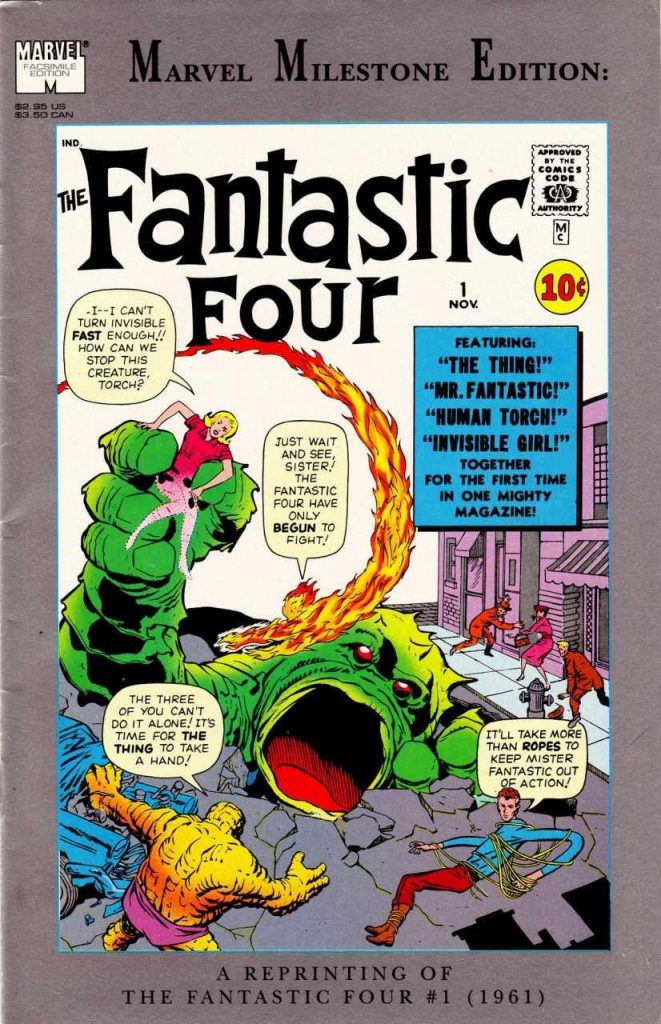 In 1961 the talents of Jack Kirby and Stan Lee brought forth an unusual group of superheroes. A quartet of adventurers mutated by cosmic radiation. This fantastic foursome would in turn help transform a struggling Marvel Comics into a multimedia powerhouse. The Fantastic Four shared aspects with another comic Kirby had worked on a few years prior, The Challengers of the Unknown. This would be the basis for arguments years later regarding creative credit. Like other titles Stan Lee was involved with there was considerable disagreement over creative credit.
In 1961 the talents of Jack Kirby and Stan Lee brought forth an unusual group of superheroes. A quartet of adventurers mutated by cosmic radiation. This fantastic foursome would in turn help transform a struggling Marvel Comics into a multimedia powerhouse. The Fantastic Four shared aspects with another comic Kirby had worked on a few years prior, The Challengers of the Unknown. This would be the basis for arguments years later regarding creative credit. Like other titles Stan Lee was involved with there was considerable disagreement over creative credit.

While the Fantastic Four has been re-booted, and re-imagined over the years, the origin story remains more or less the same. Doctor Reed Richards constructs an experimental spacecraft, and launches an expedition into outer space. While it makes sense that Richards would bring a pilot on the mission, his decision to bring his fiancé and her brother is somewhat questionable. The four are exposed to cosmic rays, granting them extraordinary abilities. Richards gains the ability to stretch and manipulate his body. His fiancé Sue Storm can become invisible at will. While her brother Johnny can control and manipulate fire. Allowing him to set himself ablaze and fly. Benjamin Grimm, the pilot was transformed into a hulking, armored Thing with superhuman strength and resilience. The Thing acted as an alter Ego of Kirby, sharing many of Jacks’ quirks and mannerisms.

Unlike other superhero groups like the Justice League, the Fantastic Four was not universally beloved. Their powers set them apart from humanity. Ben Grimm felt this estrangement keenly, with his rocky exterior Ben could never pass for human. A number of their adventures revolve around finding a cure for his condition.
Mark Evanier has written a fantastic biography of Jack Kirby, “Kirby: King of Comics” which is available through interlibrary loan. Other works by Jack Kirby may be found at the Peabody Institute of Danvers, or through interlibrary loan.
League of Extraordinary Gentlemen (1999)
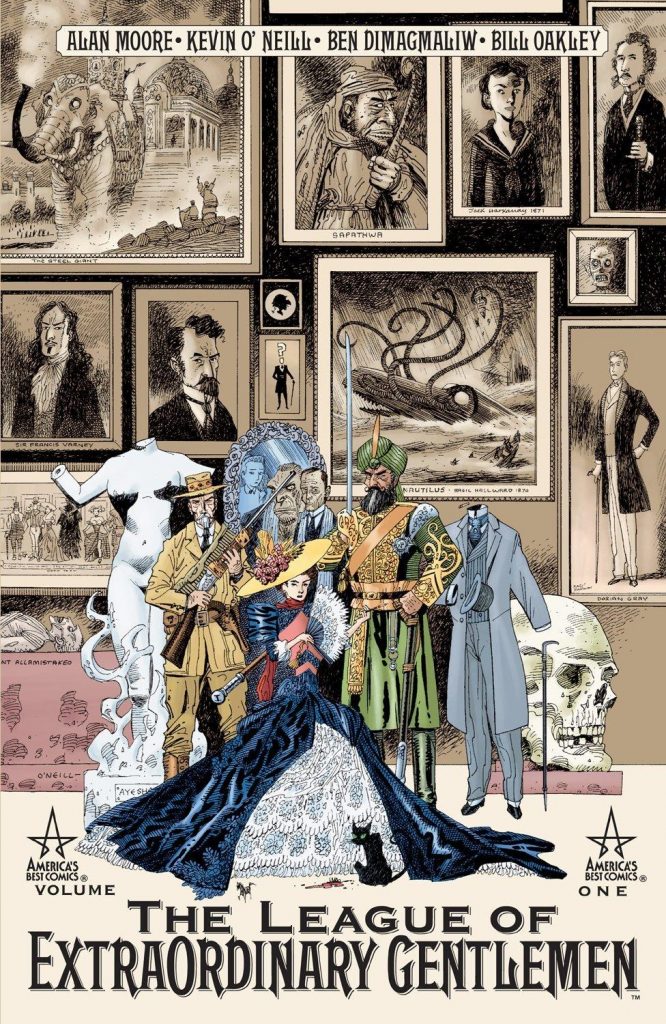
One of the few books able to satisfy by graphic novel and classic literature itch is Alan Moore’s League of Extraordinary Gentlemen series. Originally set in the late 19th century The League is not a superhero series, but a complex literary universe. Or in Moore’s own words a “…complex literary joke…” (Conversations, 165). The graphic novels deal with clashes between public domain heroes and villains. The setup is typically the same in each book, with British intelligence recruiting a group with unusual abilities. The League of Extraordinary Gentlemen 1898 series and The League of Extraordinary Gentlemen Century: 1910 throws together Minna Murray, Alan Quartermain, Doctor Griffin, Captain Nemo, and Doctor Jekyll/ Mr. Hyde. With Campion Bond as their government handler.
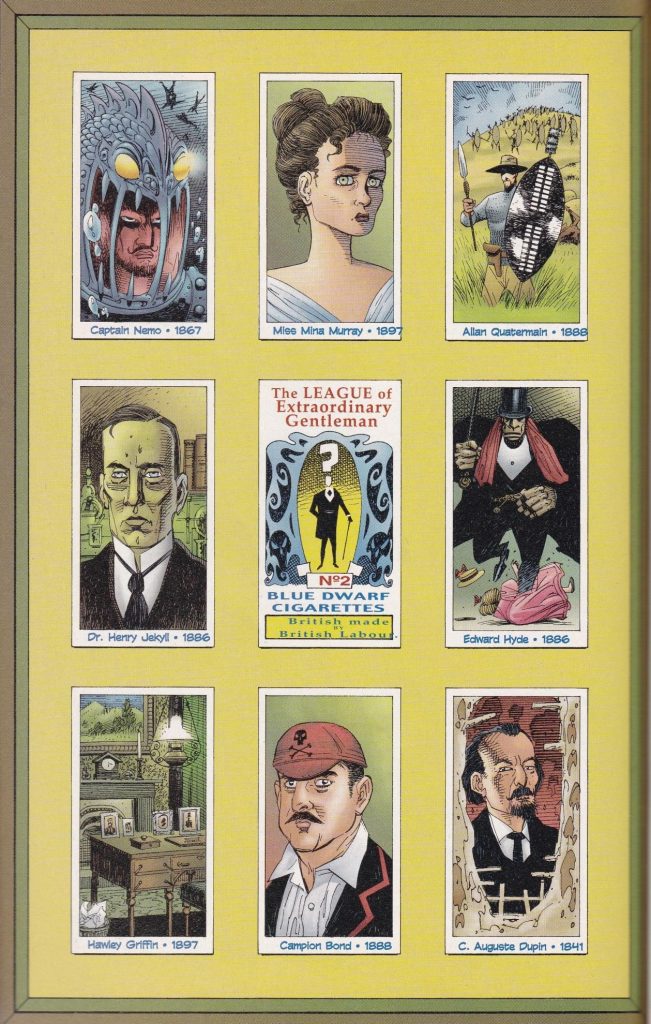
While the first group contains five members, or six depending on point of view, the connection to the Fantastic Four is based on their shared status as outcasts. As a covert military group containing known criminals the League is also similar to DC’s Suicide Squad.
The League of Extraordinary Gentlemen 1898 series, The League of Extraordinary Gentlemen Century: 1910, The League of Extraordinary Gentlemen: Black Dossier, and The League of Extraordinary Gentlemen 2003 film are all available through interlibrary loan.
For those looking for additional primary sources on The League of Extraordinary Gentlemen and Alan Moore, the Peabody Institute of Danvers has the e-book “Alan Moore, Conversation” available online to Danvers residents. Non-residents can access this e-book on the many public computers available to the Peabody Institute of Danvers, or through our public wifi.
Warren Ellis Planetary Omnibus (1999)
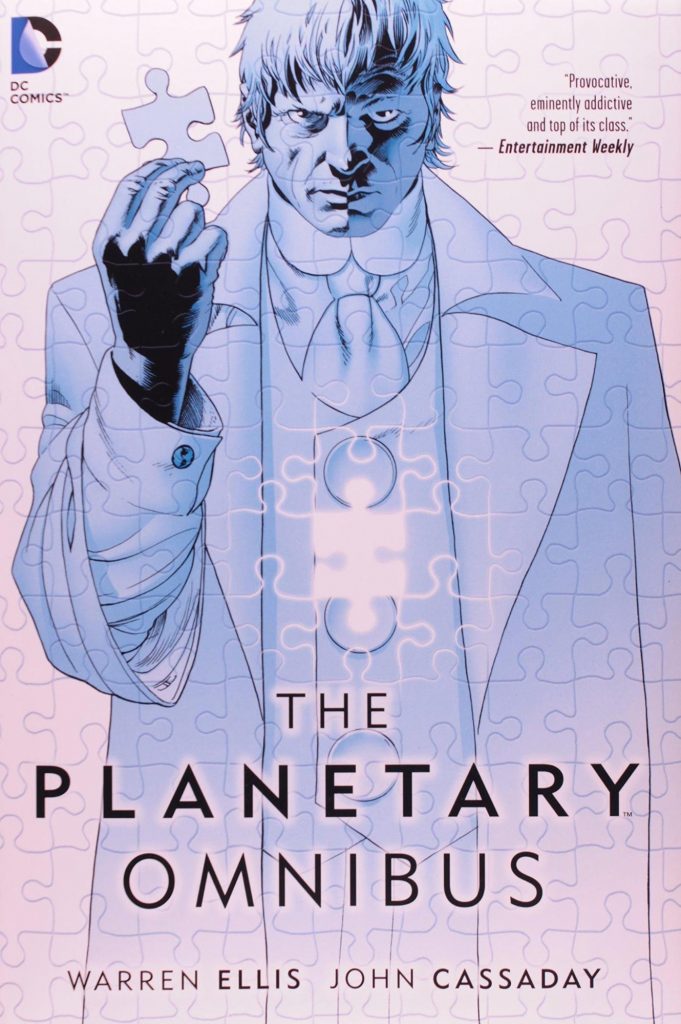
Planetary can be summed up with the signature phrase: “It’s a strange world. Let’s keep it that way.” The series is part of the Wildstorm universe, a world modeled on the DC and Marvel comic continuities. Wildstorm and The Authority are the superhero titles. Planetary is more investigative in nature, being an organization of mystery archeologists dedicated to uncovering the hidden history of the world. They are opposed by a group known only as The Four, post humans who resemble Kirby’s Fantastic Four.

This villainous quartet acts as a dark version of the Fantastic Four, using their abilities to accumulate power, and hoard the secrets Planetary is seeking to uncover. In exchange for their extra-normal abilities the Four have promised to subjugate humankind for a parallel earth of paranoid and power-hungry super beings. Ellis further cements the Kirby connection by molding this alternate earth on the planet Apokolips from DC’s New Gods series.
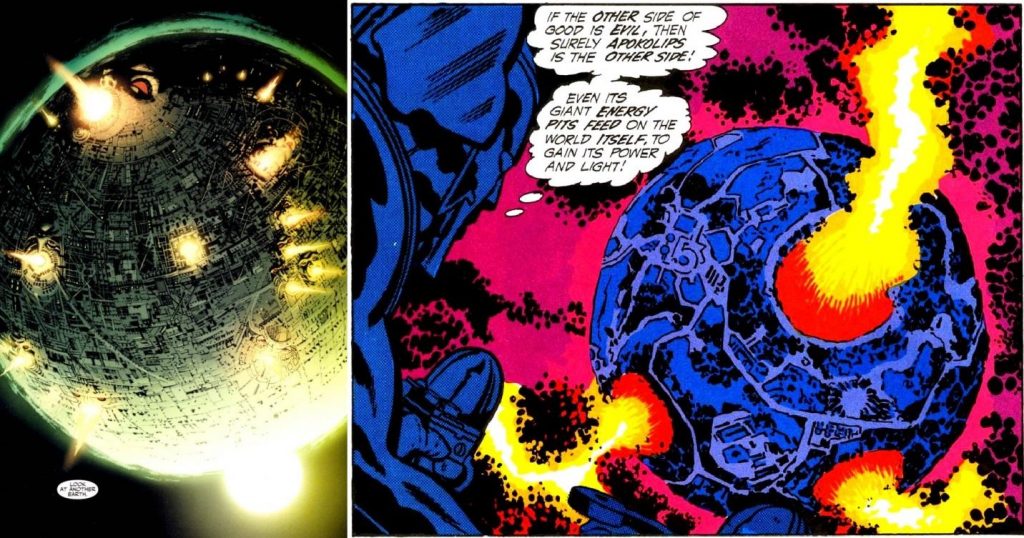
Since Planetary deals with multi-dimensional theory, The Planetary Omnibus includes a series of stories starring members of the Justice League. Including a one where Planetary acts as the antagonists.
The Planetary Omnibus, Stormwatch volumes I & II, and The Authority volume I are available at the Peabody Institute of Danvers. The Authority volume II is available through interlibrary loan.
The Venture Brothers (2004)
Like the dreaded Four from Planetary, Adult Swim’s 2004 hit the Venture Brothers presents a different take on the Fantastic Four. The series revolves around the misadventures of Doctor Venture, his bodyguard Brock Sampson, and his two boys Hank and Dean. Just as The League of Extraordinary Gentlemen is an homage to 19th century fiction, the Venture Bros. a tribute to cartoons, comic books, and pop-culture.

Within the first season we are introduced to Professor Impossible, a former teacher of Doctor Venture and fellow super-scientist. Like Reed Richards, Professor Impossible attempts a dangerous experiment that alters his family. While he ends up with stretching powers comparable to his Marvel comics counterpart, the rest of the Impossible family ends up with crippling versions.

The Venture Bros. television series is available through interlibrary loan.
The Brief Wondrous Life of Oscar Wao (2007)

To fully understand The Brief Wondrous Life of Oscar Wao, you not only have to be versed in Dominican culture and history, but geek pop culture as well. This pop culture subtext within Junot’s novel provides a unique look at the brutal Trujillo regime. Comparing his brutal rein to a version of The Lord of the Rings where Sauron won. Through the numerous pop-culture references combined with a focus on family history, Díaz shifts the historical narrative from the victimizers to the victimized. By equating
The connection to the Fantastic Four is through Oscar and his family. With his unattractive appearance Oscar is the Thing. His sister Lola with her fiery and rebellious nature resembles the Human Torch. Albelard, their self-sacrificing father corresponds to Mr. Fantastic, while his wife Beli is the invisible woman. In addition there is Oscar’s friend Yunior who is often compared to the Watcher.
The Brief Wondrous Life of Oscar Wao is available at the Peabody Institute of Danvers, or through interlibrary loan. An e-book and e-audio book are available to Danvers residents through Overdrive. Non-residents can access these through our many public computers, or via our public wi-fi.


